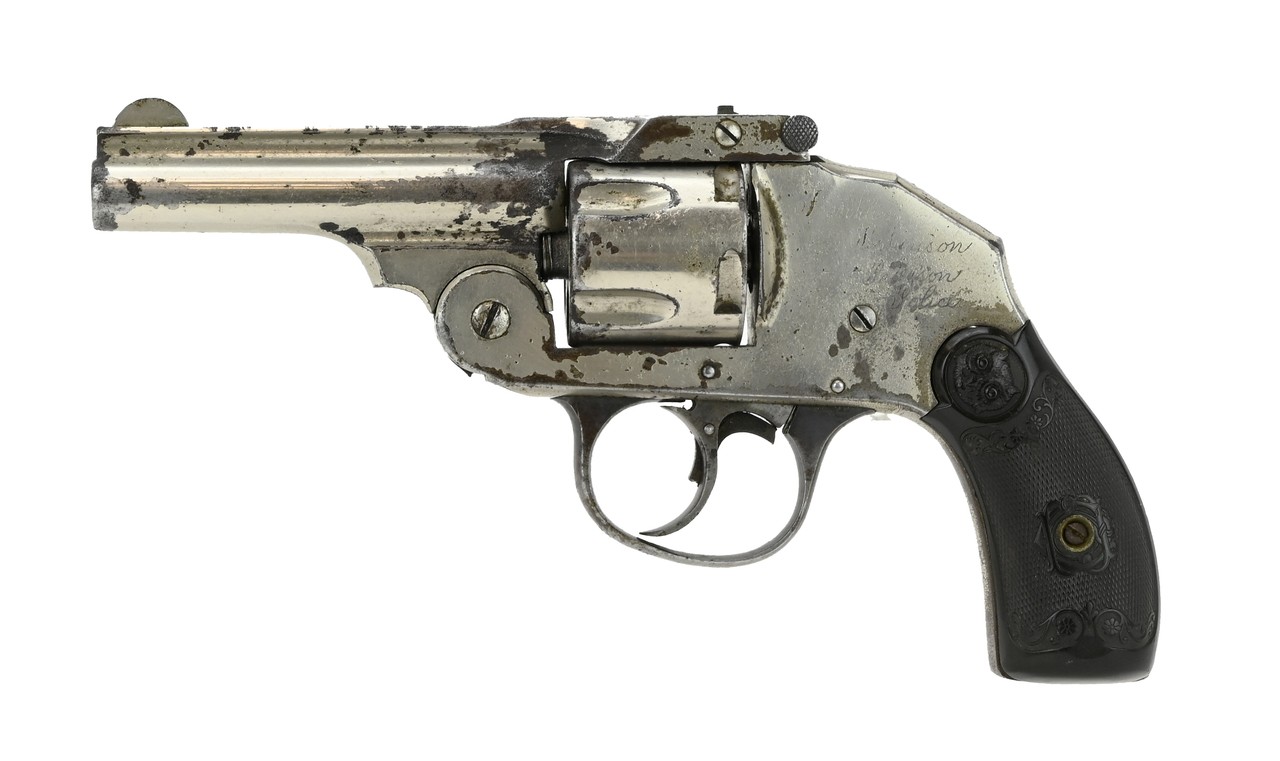

- #GRIPS FOR IVER JOHNSON TOP BREAK 38 SERIAL NUMBERS#
- #GRIPS FOR IVER JOHNSON TOP BREAK 38 MANUAL#
- #GRIPS FOR IVER JOHNSON TOP BREAK 38 CODE#
They are identified easily due to the fact that they have a double top latch, a patent date that ends in ’96, and serial numbers that start with letters A through F. The Second Model was made 1897-1908 and these were (generally) black powder only.
#GRIPS FOR IVER JOHNSON TOP BREAK 38 CODE#
On the top of the barrel rib there is a serial number, which usually doesn’t begins with a letter code but sometimes does. The first run of guns were all designed and built for low-pressure black powder cartridges. These guns use a single top latch to hold the revolver together, a simple design which boasts four patent dates listed on the barrel with the last one being ’93. Some 250,000 First Model Iver Johnson Safety Automatics were made from 1894-96, a significant and brief production life if there ever was one. In short, they were the Kahr of the 1900s. A nice, safe, and (for the time) relatively powerful handgun with a fast reload for a price that almost anyone could afford made it a hit for the company. When introduced Safety Automatics retailed for $6, which in today’s money is about $150. With so many options you could buy a small concealable revolver for discreet carry or hiding in a cash drawer, or a larger piece for home defense. These guns were sold in both a small frame version with a three to six inch barrel in 22LR (7-shot) or 32S&W (5-shot), and a large frame 38S&W version that came in barrel lengths as short as 2-inches. Up until then you risked an accidental discharge from a dropped revolver if the gun was carried with a hammer down on a loaded cylinder, which as you may imagine, was a real concern at the time. Iver Johnson Ad explaining the safety hammerĭesigned by fellow Scandinavian immigrant Andrew Fyrberg while at Iver Johnson and patented in 1896 under #566,393, this ‘Hammer the Hammer’ action was positively revolutionary for handguns. The bar prevented the gun from discharging if dropped and only fell away when the trigger was depressed all the way. This safety consisted of a bar that rested between the hammer and the rear of the cartridge in the cylinder/chamber. What made the Iver different from the Smiths was in the fact that it had an internal transfer bar safety. Its a double-action top break revolver similar in layout to the Smith and Wesson hinge frames of the 1860s era.

#GRIPS FOR IVER JOHNSON TOP BREAK 38 MANUAL#
The Iver Johnson Safety Automatic neither has a manual safety, nor is it automatic. Just before Iver died in 1895, his company began to produce a new revolver that the late engineer had perfected late in life known as the Safety Automatic. The Fitchburg, Massachusetts based factory concentrated more on its bicycles than its firearms and employed many Scandinavian immigrants. Truth be told, it started as the Johnson and Bye Company, but eventually Johnson bought out Bye and went at it alone. The Iver Johnson Arms & Cycle Works (yes, makers of handguns and fine bicycles), was started back in 1871 by a 30-year old Norwegian born inventor of the same name.


 0 kommentar(er)
0 kommentar(er)
